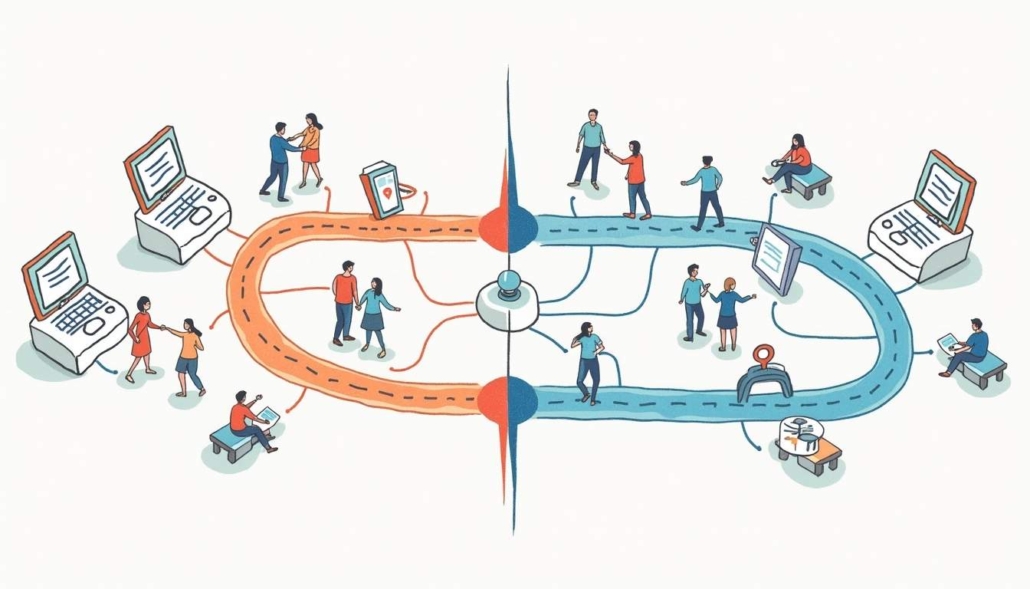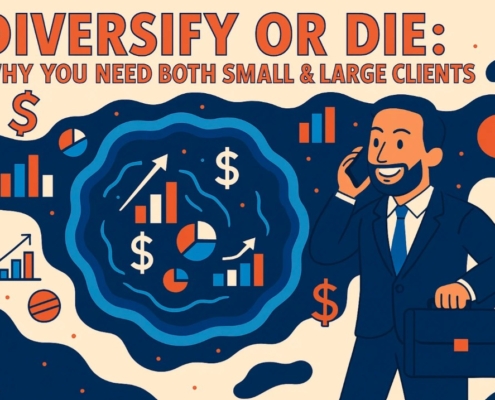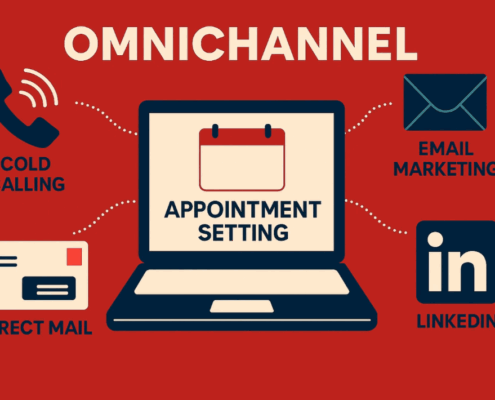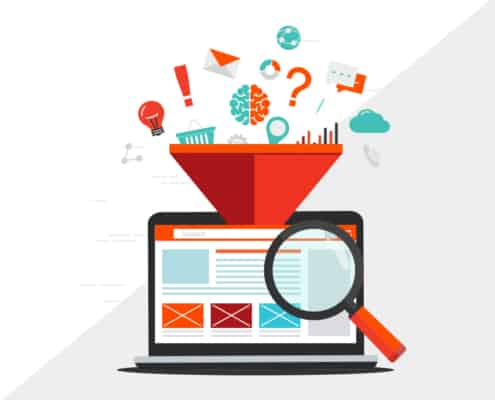

In today’s digital-first world, customer engagement is the currency of success—but how businesses approach that engagement makes all the difference. Omnichannel and cross-channel marketing are often used interchangeably, yet they take fundamentally different approaches to customer interaction.
While both strategies focus on delivering a seamless brand experience, understanding their key differences is critical for businesses looking to optimize their marketing efforts, enhance customer journeys, and drive revenue. Let’s break down how each approach works—and which one is best suited for your business goals.
Understanding Cross-Channel Marketing
Cross-channel marketing is about meeting customers where they are, using multiple platforms—email, social media, paid ads, and websites—to reach different segments of an audience. Unlike omnichannel marketing, however, cross-channel strategies don’t necessarily integrate these platforms into a seamless, interconnected experience. Instead, each channel operates independently with its own messaging and tactics, focusing on reach rather than synchronization.
Why Cross-Channel Marketing Still Works
Cross-channel marketing offers businesses the flexibility to engage audiences across multiple touchpoints, expanding brand visibility and increasing opportunities for interaction. A company might use LinkedIn for industry thought leadership, email for product promotions, and Instagram for behind-the-scenes brand storytelling—all while targeting different demographics in ways that resonate with each group.
This approach allows businesses to test and optimize messaging across platforms, fine-tune strategies based on performance, and allocate resources where engagement is strongest.
The Challenges of a Cross-Channel Approach
Despite its benefits, cross-channel marketing comes with some major limitations:
- Fragmented Customer Experiences – Without integration between platforms, customers may experience inconsistent messaging, leading to confusion or mistrust.
- Limited Data Visibility – Tracking customer behavior across multiple channels without integration can make it difficult to understand the full customer journey, leading to missed opportunities for personalized engagement.
- Resource Allocation Struggles – With separate strategies running across multiple platforms, businesses risk overinvesting in some channels while underutilizing others, potentially leading to inefficient marketing spend.
While cross-channel marketing offers broad exposure, it lacks the cohesion and personalization that today’s customers expect—highlighting why so many brands are moving toward a more unified omnichannel strategy.

Exploring Omnichannel Marketing
Omnichannel marketing connects every customer touchpoint, creating a seamless, integrated experience across all platforms. Unlike cross-channel marketing, which treats each platform separately, omnichannel strategies unify messaging, branding, and data—ensuring customers receive a consistent experience regardless of how they engage.
A Seamless Customer Journey
Omnichannel marketing prioritizes the full customer journey, mapping out interactions from awareness to conversion to ensure a smooth, uninterrupted experience. For example, a customer might discover a product on LinkedIn, receive a personalized email, and complete the purchase on the website—all while experiencing consistent messaging tailored to their preferences.
Data-Driven Personalization
Omnichannel strategies leverage integrated data to deliver highly personalized experiences. Unlike cross-channel marketing, where data is siloed, omnichannel marketing unifies customer insights across platforms, allowing brands to deliver relevant content, offers, and recommendations in real-time.
With a data-driven, customer-first approach, omnichannel marketing doesn’t just engage buyers—it anticipates their needs, builds trust, and drives long-term loyalty.
Key Differences Between Cross-Channel and Omnichannel Marketing
Both cross-channel and omnichannel marketing expand brand reach across multiple platforms, but their execution and impact differ significantly. Understanding these differences helps businesses select the right approach to meet their marketing objectives.
Independent Channels vs. Integrated Experiences
Cross-channel marketing engages customers across multiple touchpoints, but each channel operates independently. A brand may run email campaigns, social ads, and website promotions simultaneously, but these efforts aren’t necessarily connected. This lack of integration can lead to inconsistencies in messaging and customer experience.
Omnichannel marketing, on the other hand, fully integrates every channel, ensuring a seamless transition between touchpoints. While cross-channel marketing widens reach, omnichannel marketing deepens engagement by creating a unified brand experience.
Customer Experience: Performance vs. Personalization
Cross-channel strategies focus on maximizing channel performance rather than creating a seamless journey. The goal is to engage audiences where they are—whether that’s through social media, email, or direct outreach—but without necessarily connecting the experience between channels. This can lead to disconnected interactions, where a prospect may receive different messaging across different platforms.
Omnichannel marketing prioritizes customer continuity, ensuring that every touchpoint builds on the last. While this creates a more fluid experience, it requires advanced data integration and higher levels of personalization, which may not be feasible for every business.
Data Utilization and Messaging Consistency
Cross-channel marketing often struggles with fragmented data, making it difficult to track and personalize customer interactions across different platforms. Marketers may know how each channel is performing individually, but without a unified view of the customer journey, they can’t fully optimize messaging.
Omnichannel strategies break down data silos, allowing brands to deliver hyper-personalized experiences based on customer behavior across multiple touchpoints. However, this requires stronger analytics and technology investments—which may not be necessary for businesses focused on high-volume, broad-reach campaigns.
With our proven omnichannel appointment setting strategies, we help you turn cold prospects into qualified sales meetings. See how a unified approach across channels accelerates your pipeline and drives revenue.
The Advantages of Omnichannel Marketing
A well-executed omnichannel strategy doesn’t just increase brand presence—it drives loyalty, conversions, and long-term growth. Here’s how:
Stronger Customer Loyalty
Customers stay loyal to brands that understand their needs and provide seamless, personalized experiences across every touchpoint. Omnichannel marketing fosters a consistent connection, making customers more likely to return and engage.
Higher Sales and Conversions
When brands deliver tailored recommendations and a frictionless buying experience, conversions follow. A data-driven omnichannel approach ensures customers receive relevant messaging at the right time, boosting purchase rates and revenue.
Stronger Brand Perception
A consistent brand experience across all platforms builds credibility. When customers receive cohesive messaging and seamless interactions, they view the brand as professional, reliable, and customer-focused—driving referrals and stronger market positioning.
Overcoming the Challenges of Omnichannel Marketing
Omnichannel marketing delivers exceptional results, but businesses must navigate operational, technological, and strategic hurdles to execute it effectively. Here’s how companies can solve these common challenges:

Challenge: Data Integration Complexity
With customers engaging across multiple channels—social media, email, live chat, and in-person interactions—unifying data into a single, actionable view is a major challenge. Without a consolidated data system, customer insights remain fragmented, making personalization and engagement difficult.
Solution:
Investing in CRM and advanced analytics tools allows businesses to centralize customer data, ensuring teams have a real-time, 360-degree view of each lead or customer. AI-driven platforms can automate data synchronization, eliminating silos and enhancing decision-making.
Challenge: Resource Constraints
Building and maintaining an omnichannel strategy requires a blend of technology, talent, and time. Small and midsize businesses often struggle to allocate the necessary resources while keeping costs under control.
Solution:
Businesses can start small by focusing on their highest-impact channels and gradually integrating additional platforms. Marketing automation tools help streamline engagement, reduce manual workload, and improve efficiency, allowing teams to do more with fewer resources. Outsourcing specific tasks—such as content creation or paid media management—can also help scale efforts without overburdening internal teams.
Challenge: Maintaining Brand Consistency Across Channels
As businesses expand across multiple platforms, messaging, tone, and customer experiences can become inconsistent, leading to confusion and diminished brand credibility.
Solution:
Developing a comprehensive brand guideline ensures every touchpoint—from email campaigns to social media ads to sales interactions—delivers a consistent and cohesive brand experience. Regular audits, cross-functional collaboration, and real-time customer feedback loops help brands stay aligned while adapting to market changes.
Choosing the Right Strategy: Omnichannel vs. Cross-Channel Marketing
The choice between omnichannel and cross-channel marketing comes down to your business goals, customer expectations, and available resources. Here’s how to determine which strategy aligns best with your objectives:
Understand Your Customer Journey
How do your customers interact with your brand? If they engage across multiple platforms and expect a seamless, personalized experience, an omnichannel strategy ensures every interaction feels connected and intentional. On the other hand, if your audience primarily engages with only a few select channels, a cross-channel strategy might be a more practical approach.
Evaluate Your Resources & Technology
Omnichannel marketing demands a higher investment in technology, automation, and data integration to provide a unified experience across all touchpoints. If your business has the infrastructure to support this, omnichannel is the future-proof choice. However, if your team is working with limited resources, a targeted cross-channel approach can still drive results without overwhelming your operations.
Define Your Marketing Priorities
If customer retention, long-term brand loyalty, and personalized engagement are top priorities, omnichannel marketing is the way to go. However, if your primary goal is to expand brand reach and generate awareness across different platforms, a cross-channel approach can effectively support high-volume engagement and lead acquisition.
Final Thoughts
Both omnichannel and cross-channel marketing offer valuable ways to engage customers, but the key to success lies in understanding how each strategy aligns with your business goals. Omnichannel marketing prioritizes seamless customer experiences, fostering brand loyalty, increased sales, and a unified brand perception. Meanwhile, cross-channel marketing provides broad exposure and flexibility, making it a powerful tool for reaching diverse audiences.
The right approach depends on your customer journey, available resources, and long-term objectives. By making data-driven decisions and prioritizing customer engagement, businesses can position themselves for success in an increasingly competitive market.
Transform Your Marketing Strategy Today
Ready to build a marketing strategy that delivers real results? Abstrakt Marketing Group is a leader in B2B lead generation, helping businesses across the U.S. and Canada scale with high-quality, sales-ready leads. Whether you’re looking to refine your omnichannel strategy or maximize cross-channel impact, we provide the expertise and tools to drive substantial growth.
Don’t let fragmented marketing hold you back. Learn more about how we can help you create a scalable, results-driven approach to lead generation and revenue growth in today’s digital landscape.










